A Trip To Iconic Italian Yachtbuilder Riva And Lake Como
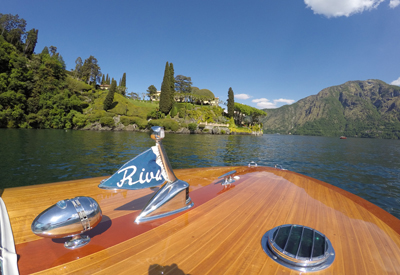
Story And Photos By Iain Macmillan
Eyes turn and conversations on shore pause as one boat in particular approaches the Grand Hotel Serbelloni’s jetty that extends out into the sparkling blue waters of Lake Como off Bellagio, northern Italy. It’s not because the Clooneys, George Lucas or Richard Branson are on board, not this time anyway, the attention is on the boat itself. The world’s most valuable, most magnificent mahogany launch, a classic 1960s Riva Aquarama, is paired appropriately with Como’s most prestigious hotel, its Michelin star dining room and suites that have housed royalty; a perfect mix of pleasure, luxury and a distinguished history.
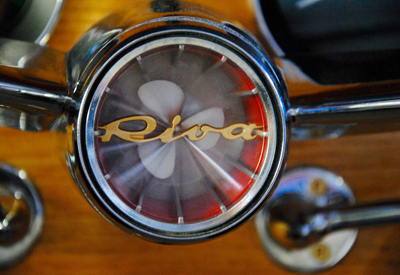
Around the world, various models of this definitive classic boat turn heads, with owners from film stars to professional athletes, heads of state to dictators, financial barons to hereditary barons. At least 20 can be found in the summer waters of the Thousand Islands and Muskoka including one formerly owned by executed Romanian dictator Nicolae Ceausescu. Irresistible is the sizzle of 22 coats of hand-rubbed varnish, the signature white-and-aqua aft sunbed and seating, the kitten-meets-lion purr of its twin engines to name a few of its alluring aspects. Classic Riva runabouts epitomize the Jet Set era of the 1950s and ’60s making a Duke, Greavette or Shepherd take a back seat.
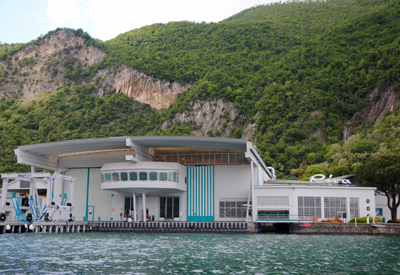 A young Pietro Riva started it all in 1842 repairing working boats on nearby Lagod’Iseo, the smallest of northern Italy’s picturesque lakes that have attracted visitors from ancient Romans to European nobility. In time, Pietro began making boats under his own name and eventually brought his son Ernesto on board. It was Ernesto who added combustion engines and as the story goes, began building the brand with larger workboats. Ernesto met his fate at age 50 when he was crushed to death launching one of his own boats. Grandson Serafino was steering the firm when boats began to morph from transportation to, well, boating for the sake of boating, and it was Serafino who had a passion for racing. But when Serafino begat Carlo, the golden age of Riva truly began.
A young Pietro Riva started it all in 1842 repairing working boats on nearby Lagod’Iseo, the smallest of northern Italy’s picturesque lakes that have attracted visitors from ancient Romans to European nobility. In time, Pietro began making boats under his own name and eventually brought his son Ernesto on board. It was Ernesto who added combustion engines and as the story goes, began building the brand with larger workboats. Ernesto met his fate at age 50 when he was crushed to death launching one of his own boats. Grandson Serafino was steering the firm when boats began to morph from transportation to, well, boating for the sake of boating, and it was Serafino who had a passion for racing. But when Serafino begat Carlo, the golden age of Riva truly began.
Bridgette Bardot, Sophia Loren, Elizabeth Taylor and Richard Burton, Peter Sellers and Jordan’s King Hussein weren’t just photographed in Rivas, they were owners. Sean Connery didn’t use his when he was James Bond but Pearce Brosnan drove one in GoldenEye. (It was a loaner.) Today Mr. and Mrs. Clooney dry-sail a Riva from Villa Oleandra, their 18th century summer home on Lake Como.
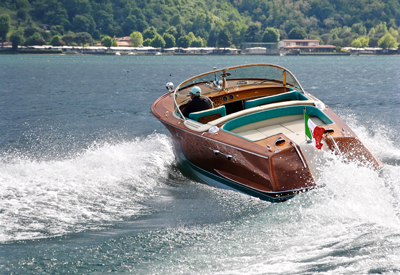
I joined a Bay Street friend, who requested anonymity in this article, on a personal buying mission in early May, for a road and water trip to end all others. Aside from motoring about Lakes Garda, Iseo and Como on different models of these dreamy classic boats, days were spent chatting with proud artisans in restoration workshops and when the situation was required, pretending to represent significant family money negotiating at posh brokerages in Nice and Monaco. The only thing I felt we really missed out on was meeting Carlo Riva in person, who at age 95, had died just three weeks before our trip.
Carlo was designing and building boats as a young teenager. Disagreeing with his father, young Carlo was captivated with Chris-Crafts and by 19 had built his first twin-engine design, a huge departure from his father’s designs. Indeed, before he was 30, he had designed and built more than 45 different models including power, sail and rowboats. By 1950 he was disagreeing with his father on many things from modern designs to new laminated construction techniques. Carlo managed to find his own financial backers and set out on his own and a few years later. With his father’s eventual and reluctant blessing, Carlo took over the Riva name and moved into the space-age-looking ship’s bridge headquarters on Lake Iseo that still operates today.
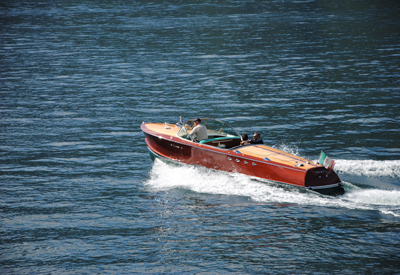 It was at this early stage that great-grandson Carlo began a relationship with reliable Chris-Craft engines and before long, a string of these mahogany masterpieces became famous. Models like the Scoiattolo (Squirrel), Ariston (Aristocrat), Tritone (Tritan) and Corsaro (Corsair) were followed by the Florida, Junior and Olympic. The Aquarama, named after the popular 1950s Cinerama wide-screen in movie theatres at the time, influenced the design of Riva’s signature curving windscreen.
It was at this early stage that great-grandson Carlo began a relationship with reliable Chris-Craft engines and before long, a string of these mahogany masterpieces became famous. Models like the Scoiattolo (Squirrel), Ariston (Aristocrat), Tritone (Tritan) and Corsaro (Corsair) were followed by the Florida, Junior and Olympic. The Aquarama, named after the popular 1950s Cinerama wide-screen in movie theatres at the time, influenced the design of Riva’s signature curving windscreen.
Of the thousands of Rivas built, the most famous, the Aquaramamodel (8-8.8m LOA) began in 1962. By 1964 Carlo had a showroom in the Rockefeller Center in New York City to lure the grandparents of today’s one per cent.
The last one, in fact, the last wooden-hulled Riva, number 785, came off the line in 1996. Truly a nautical legend, the Aquarama’s twin engines changed over the years from Chris-Craft to Cadillac to Chrysler as it morphed into the Super Aquarama and for only one year, 1972, when only seven were built, the AquaramaLungo. The Special went into production in 1972. Its distinctive wrap-around windscreen, streamlined bow stem, transom swimstep and sunken sun lounge over the engine cover are eye candy today as much as when the boat was in production.
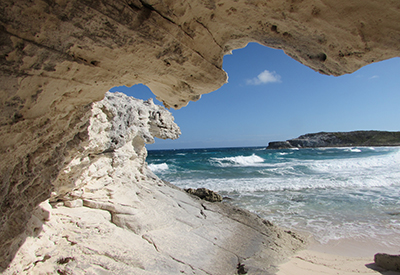
Power ranged widely across the Aquarama line and topped out at 350hp a side. Top speed: 50 knots. In 1971, an Aquarama cost $21,000, prices today exceed C$1 million but you could be cruising an older Aquarama in less-pristine condition for $500,000.
Although Carlo Riva sold the company to American Whittaker Corp. in 1969 (it was sold again in 2000 to Feretti) he didn’t depart until 1972 and the fastidious perfectionist remained in the Riva service business until his death. Both RAM (RevisioneAssistenzaMotoscafi) and Monaco Boat Service today are in the Riva family and vitally active. Monaco Boat Service’s spectacular location (in a purpose-built tunnel dug beneath the royal palaces in Monaco, with convenient cave temperature and humidity) consists of two-sides each with double-decker layers of classic Rivas lined up half a metre apart in parallel rows waiting for owners to request a launch. Just four crucially balanced lifting points are required for the ceiling crane straps to accurately pluck a boat from its perch and launch it into the Mediterranean Sea minutes later. (Around the world, the majority of Rivas are not left tied up and floating when their owners are not on board.)
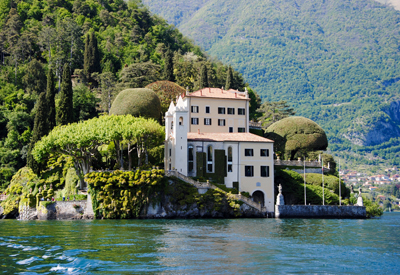 RAM on the other hand remains the world’s largest restoration facility for Rivas so enormous, it appears more like a production factory than a shop for repairs and rebuilds. Classic Rivas are returned to Lagod’Iseo from around the world to be worked on eventually exiting as seemingly new as the day Bridgette Bardot picked up hers.
RAM on the other hand remains the world’s largest restoration facility for Rivas so enormous, it appears more like a production factory than a shop for repairs and rebuilds. Classic Rivas are returned to Lagod’Iseo from around the world to be worked on eventually exiting as seemingly new as the day Bridgette Bardot picked up hers.
In ultimate juxtaposition, down the lake in Sarnico, another 2017 Rivamare leaves the factory doors. Introduced just last June the 12-metre, Volvo-Penta driven fibreglassRivamare is impressive with its double-curved laminated crystal glass windscreen, below-waterline lighting, air conditioning and stabilizers and other modern accruements. The bling and “teched out” selling list is more than enough to knock one abruptly awake from this classic boat dream.
-30-




























